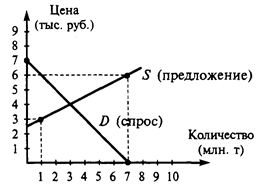Measurement errors and their classification
STATISTICAL REGULARITIES, ARISING OUT OF THE MEASUREMENT PURPOSE: Study the methods of processing the results of direct measurements. INTRODUCTION: It is impossible to do an experimental measurement with perfect accuracy. There is always an uncertainty associated with any measured quantity in an experiment even in the most carefully done experiment and despite using the most sophisticated instruments. This uncertainty in the measured value is known as the error in that particular measured quantity. There is no way by which one can measure a quantity with one hundred percent accuracy. In presenting experimental results it is very important to objectively estimate the error in the measured result. Such an exercise is very basic to experimental science.
THEORY Measurement errors and their classification Two terms are widely used in discussions of the reliability of data: precision and accuracy. Precision describes the reproducibility of results, that is, the agreement between numerical values for two or more replicate measurements, or measurements that have been made in exactly the same way. Generally, the precision of an analytical method is readily obtained by simply repeating the measurement. [Two] terms are used to describe the precision of a set of replicate data: standard deviation [and] variance. These terms have statistical significance.
Accuracy describes the correctness of an experimental result expressed as the closeness of the measurement to the true or accepted value. Accuracy is expressed in terms of either absolute error or relative error. Assume that the true value of a quantity is x0. By measuring this value tend to get a result different from x0. If the measurement is performed repeatedly, the measurement is not only different from x0, but in most cases are different and each other. Denote measurements x1, x2, x3,..., xn, then the difference
Δ xi = xi - x0, where i = 1, 2,..., n,
is called the absolute error of measurement. The accuracy in terms of the relative error Er equals to
In the classification of errors according to their properties distinguish systematic errors, random errors and misses. Systematic errors in experimental observations usually come from the measuring instruments. They may occur because: · there is something wrong with the instrument or its data handling system, or · because the instrument is wrongly used by the experimenter.
Random errors in experimental measurements are caused by unknown and unpredictable changes in the experiment. These changes may occur in the measuring instruments or in the environmental conditions, for example: temperature, pressure, humidity. Misses - a consequence of wrong actions of the experimenter. This, for example, incorrect recording of the results of observation, wrong metering, etc. If you notice misses they will be excluded from the calculations.
|





